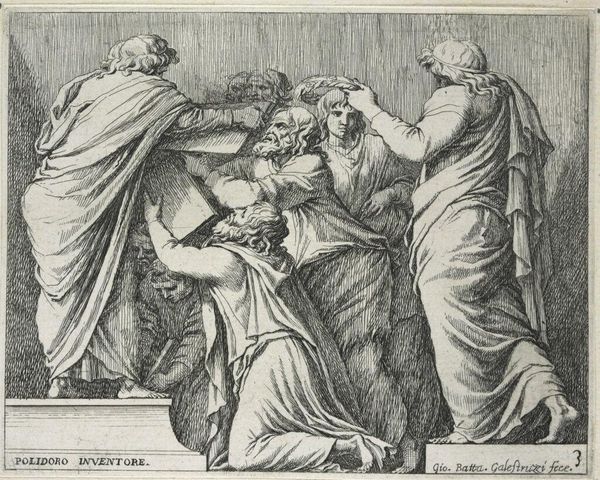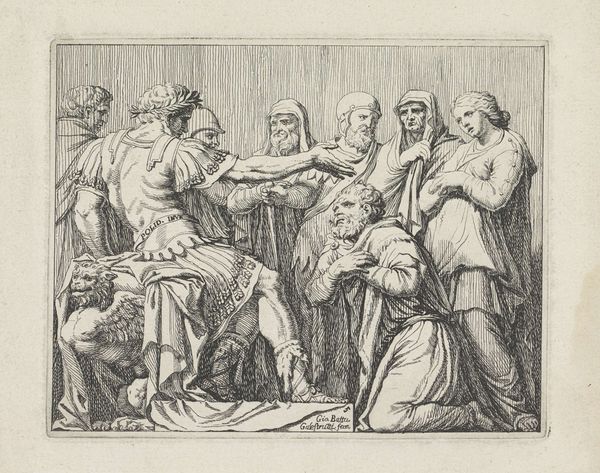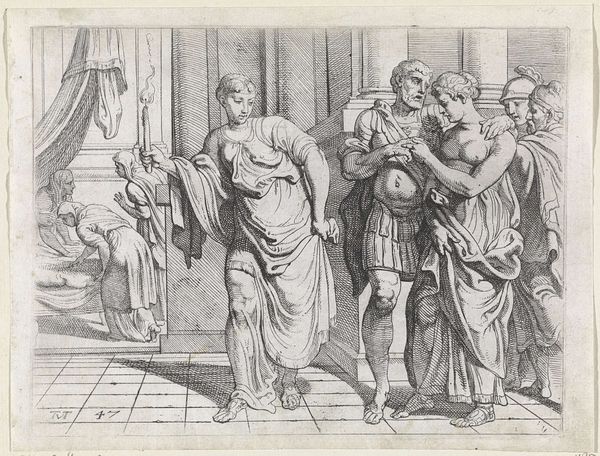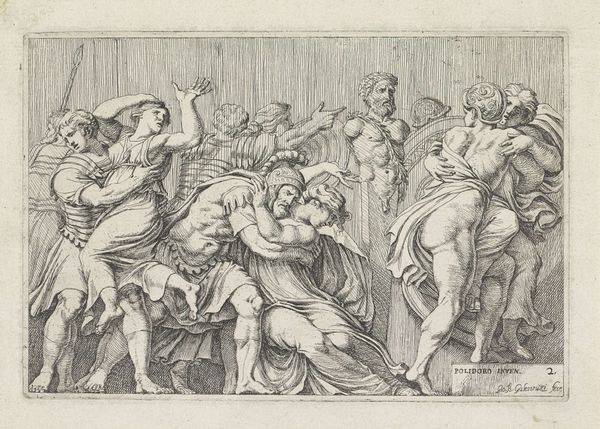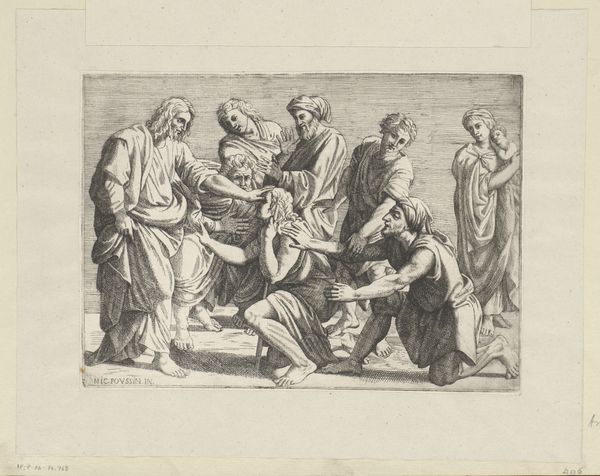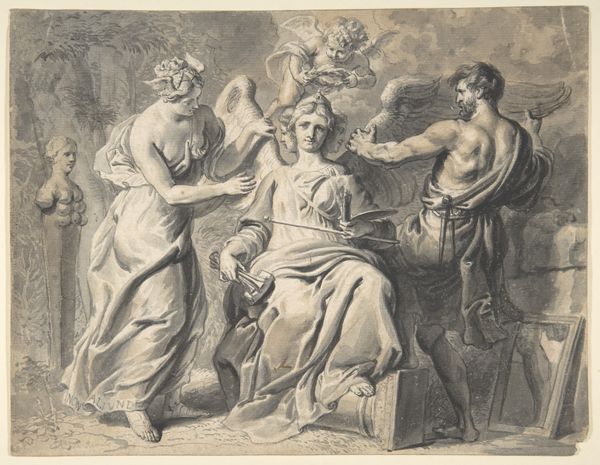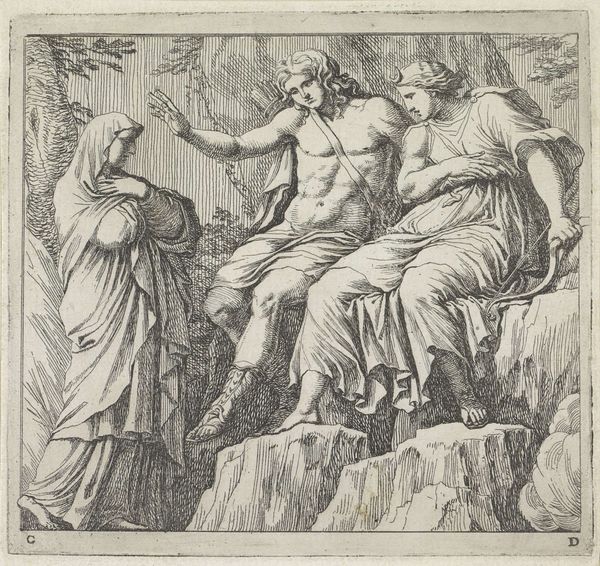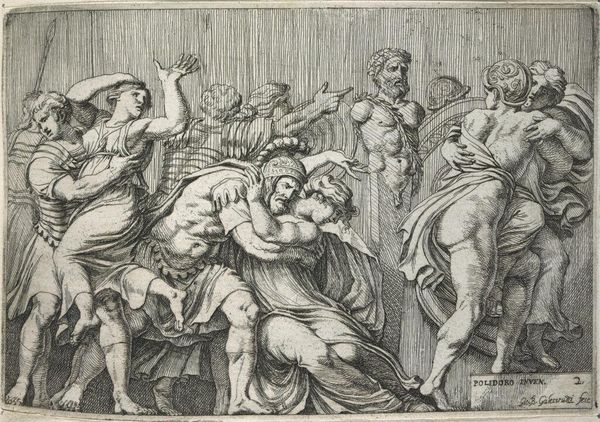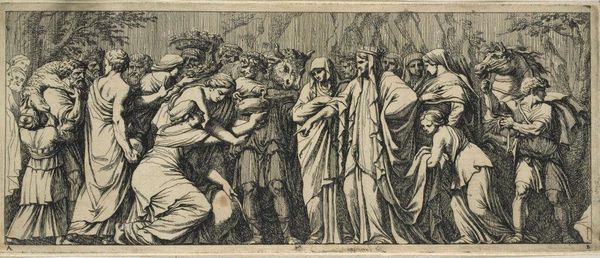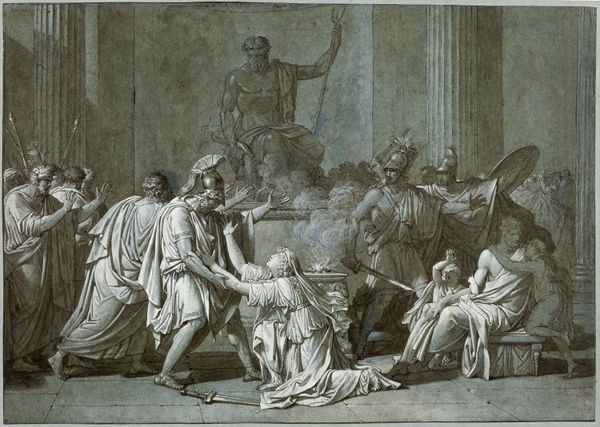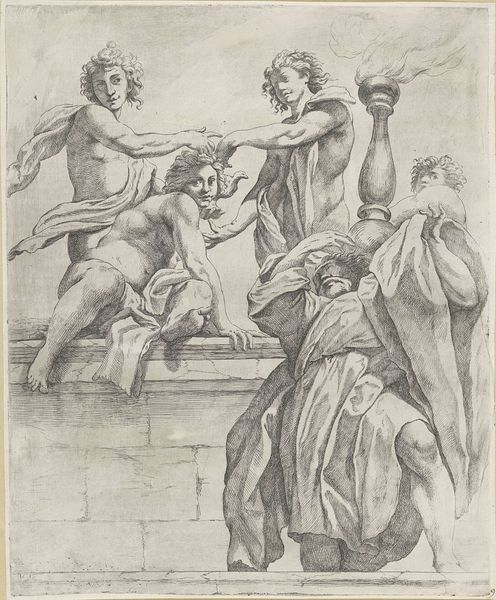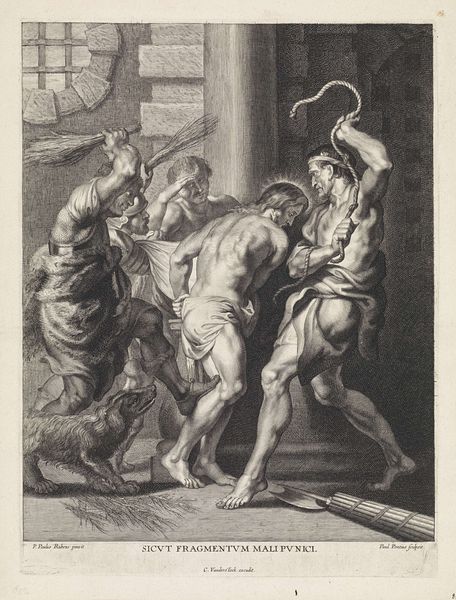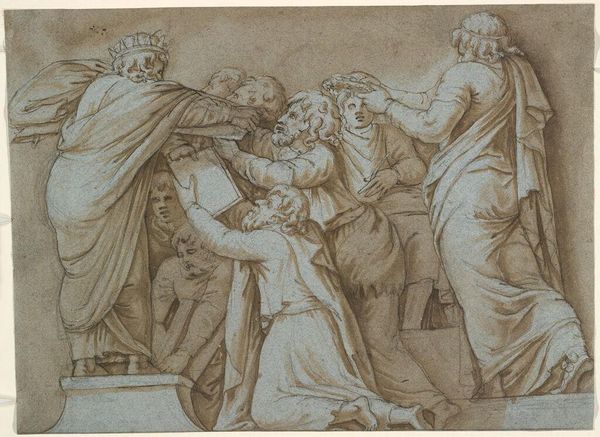
Lycurgus en Numa Pompilius geven de Romeinen de wetten 1625 - 1689
0:00
0:00
print, etching, engraving
#
narrative-art
#
baroque
# print
#
etching
#
figuration
#
history-painting
#
engraving
Dimensions: height 119 mm, width 150 mm
Copyright: Rijks Museum: Open Domain
Editor: This is Giovanni Battista Galestruzzi's etching, "Lycurgus and Numa Pompilius Giving Laws to the Romans," created sometime between 1625 and 1689. The figures, rendered with delicate lines, appear solemn as they are receiving or giving these laws. How would you interpret this scene within its historical context? Curator: The image presents us with a staged moment of patriarchal origin; laws being given by men to the early Romans. Who are these Romans? Is it the people at large, or a more circumscribed group of privileged citizens? Given the era, Baroque period, we must ask, what purpose does idealizing law-giving serve in the 17th century? Does it legitimize current power structures by harking back to a supposedly pure, original moment? Editor: That's a really interesting take! I hadn’t thought about the legitimizing aspect. The classical garb makes the figures seem removed, almost mythical. Do you think that contributes to this sense of authority? Curator: Absolutely. The use of classical imagery would immediately signal "authority" to a 17th-century viewer. It links the Roman concept of law directly with an idea of eternal and immutable values. I would even pose that in choosing a distant subject, artists skirted commentary on the here and now. And what’s not being shown becomes all the more crucial, as class disparities are veiled. Editor: So the print becomes less about ancient Rome and more about reinforcing social order in Galestruzzi’s time? Curator: Precisely. Prints circulated widely, carrying these visual and ideological messages into homes and public spaces. The engraving process made images reproducible and affordable, spreading political and social narratives effectively. What I’m also drawn to is this relationship between artist and engraver; the role of interpretation adds an additional dimension to the circulation of images. Editor: I'm now seeing so many new angles in this print, a new meaning. Thank you, that's given me so much to consider. Curator: My pleasure. Remember, every depiction, even of the distant past, speaks volumes about the present that produced it.
Comments
No comments
Be the first to comment and join the conversation on the ultimate creative platform.
